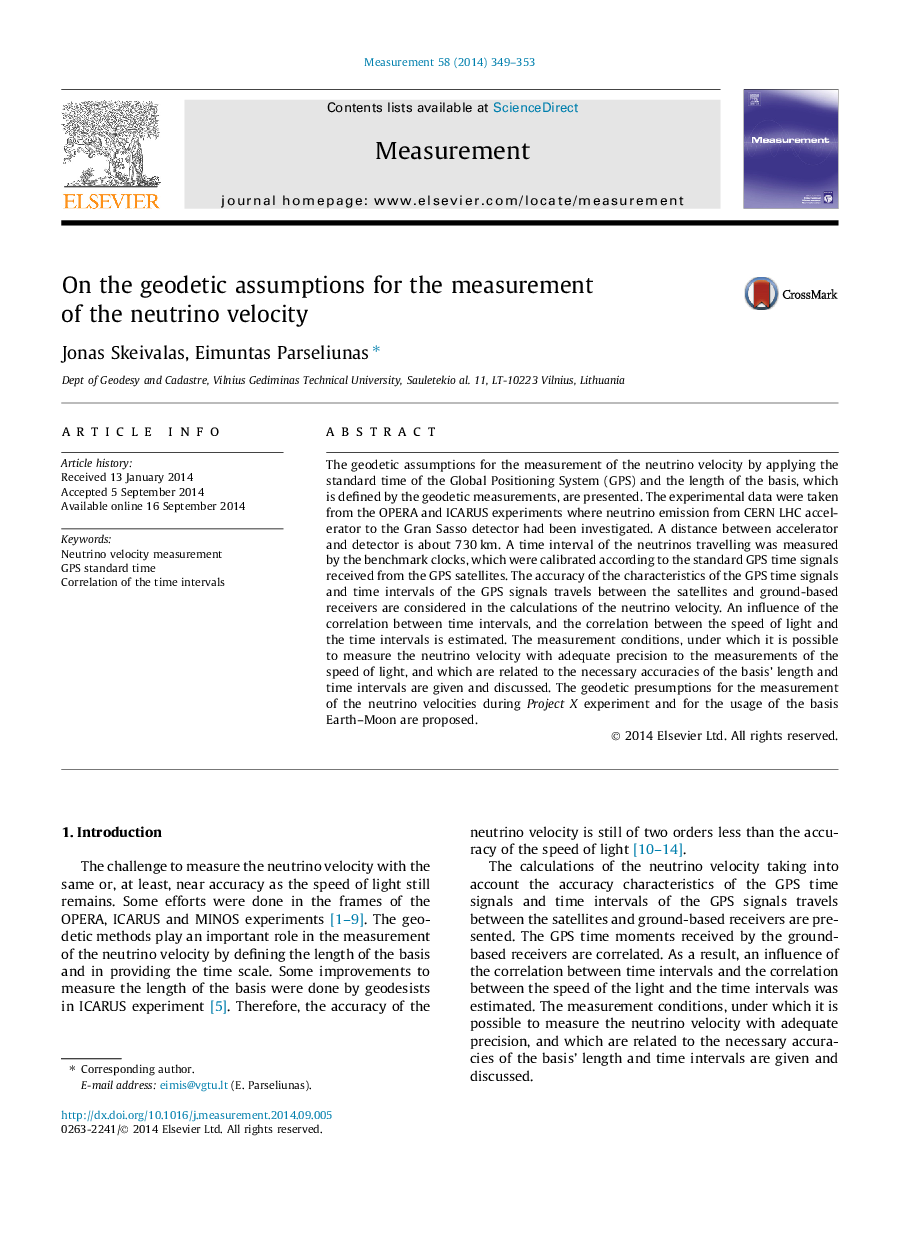| Article ID | Journal | Published Year | Pages | File Type |
|---|---|---|---|---|
| 7124953 | Measurement | 2014 | 5 Pages |
Abstract
The geodetic assumptions for the measurement of the neutrino velocity by applying the standard time of the Global Positioning System (GPS) and the length of the basis, which is defined by the geodetic measurements, are presented. The experimental data were taken from the OPERA and ICARUS experiments where neutrino emission from CERN LHC accelerator to the Gran Sasso detector had been investigated. A distance between accelerator and detector is about 730Â km. A time interval of the neutrinos travelling was measured by the benchmark clocks, which were calibrated according to the standard GPS time signals received from the GPS satellites. The accuracy of the characteristics of the GPS time signals and time intervals of the GPS signals travels between the satellites and ground-based receivers are considered in the calculations of the neutrino velocity. An influence of the correlation between time intervals, and the correlation between the speed of light and the time intervals is estimated. The measurement conditions, under which it is possible to measure the neutrino velocity with adequate precision to the measurements of the speed of light, and which are related to the necessary accuracies of the basis' length and time intervals are given and discussed. The geodetic presumptions for the measurement of the neutrino velocities during Project X experiment and for the usage of the basis Earth-Moon are proposed.
Related Topics
Physical Sciences and Engineering
Engineering
Control and Systems Engineering
Authors
Jonas Skeivalas, Eimuntas Parseliunas,
